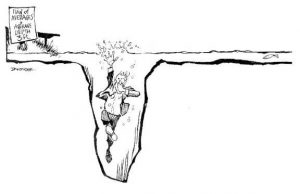Digital marketing is not a new concept – four out of five marketing organisations have a digital marketing platform (DMP) or are implementing one, according to Gartner – but it can be a confusing one. All the brands that we work with engage with prospects and customers through various digital media. Often this is to recruit new customers or supporters, but just as often, this includes communications to existing customers, providing product updates and information and continuing the loyalty-building relationship.
However, for many of our clients, a massive disconnect still remains between the digital marketing teams and the more traditional direct marketing, brand marketing and fundraising teams that we tend to work with. Although this is definitely changing and we are seeing much more crossover, it does raise some interesting questions about why this disconnect exists and how brands can address it.
Data and marketing
Data can support digital marketing, just as it does direct marketing. For example, our role is to help our direct marketing clients build long-term, lasting and profitable relationships with their customers or supporters. Primarily we do this in two ways:
- We help recruit new customers (or supporters) who look most like the ‘best’ existing customers. Best can be defined in a number of ways (e.g. repeat purchasers, consistent supporters) but the end goal remains the same: to find more of them.
- We help identify, retain and grow existing customers who are most likely to become those best customers.
Although this simplifies it somewhat, these two main objectives are a pretty neat summary. We help our clients to do this by using the data we hold to supplement the data our client holds to better inform and target these two key areas.
It is no different in digital marketing: clients want to do exactly the same thing. Firstly, they want to use the media channels available to recruit new customers at the lowest cost and then, secondly, they want do what they can to keep them and grow them once they have them.
Again, our role – as a marketing data and insight company – is no different here: we have data on individuals that can be helpful when targeting new prospects; we help to ensure that existing customers are not served with prospect advertising; and we have data on individuals that help with refining and directing customer comms. Clearly there is some nuance as a result of this being digital media rather than traditional media, but the principles remain the same.
Direct vs. digital marketing
So why does the data that we hold, and which is used successfully in offline channels, such as mail, phone and email, not get used as widely in online, digital campaigns? Do we need to do more, as an agency, to make our data available in the right way, or is the reason more cultural: that the two are seen as two sides of the same coin but never on the same side?
For me, a lot of the confusion with digital marketing comes down to how the campaigns are run. Data management platforms (DMPs), demand-side platforms (DSPs), Google BigQuery, lockers, bins and so on: the technology in the digital sphere is both diverse and complex. In many cases, it feels as though it has been made deliberately so: it is a way to keep the secrets safe and in the hands of the experts.
You can draw similar parallels to when email came along. The email service providers (ESPs) at the time created a myth that setting up and running an email campaign was complicated and confusing and needed an expert to do it. Over time, those barriers were broken down and the complexity removed. Now ESPs are pretty much run of the mill and so intuitive and user-friendly that almost anyone can use one.
Data still performs the same
In some ways, all this technology is no different from any other campaign: it’s just about who we are sending the data to, what format it needs to be in, what variables are needed and how it connects to the content. This is borne out by some examples of things we have been asked to do by clients recently, all of which use data from our ‘traditional’ data assets:
- Using Facebook to enhance campaigns being run in other media, such as email
- Tailoring content on prospect campaigns to make the ads more relevant
- Loading existing customers into Google to exclude from prospect mailings and providing relevant contact details for matching
- Recognising existing customers on the client website and providing relevant content.
Mind the gap
So, when it comes down to it, why is there such a gap between digital and traditional marketing, between offline and online campaigns. Are direct marketers scared of digital marketing? This seems unlikely but there is definitely a sense that any new channel creates a level of unease. Actually, new channels mean new ways of engaging and marketers are very good at using whatever is available.
Is it, then, that digital marketers are creating a level of complexity to lock out the old school direct marketer? Again, this seems unlikely. It seems far more likely that, as with any newer industry, experts have been created and they haven’t had a chance to look and see what can be learned from what came before.
As a data marketer, the good thing is that it is in fact all very similar and is driven by what data we have on a consumer and how we can use it (legally of course). Digital marketing is and should be opening up huge new routes to market. There is so much that can be learned from what has and hasn’t worked in the past – don’t get me started on testing for example – that bringing teams to work closer together can only reap rewards for everyone involved, irrespective of whether you’re a digital or a direct marketer.
Digital & Social Articles on Business 2 Community
(13)






